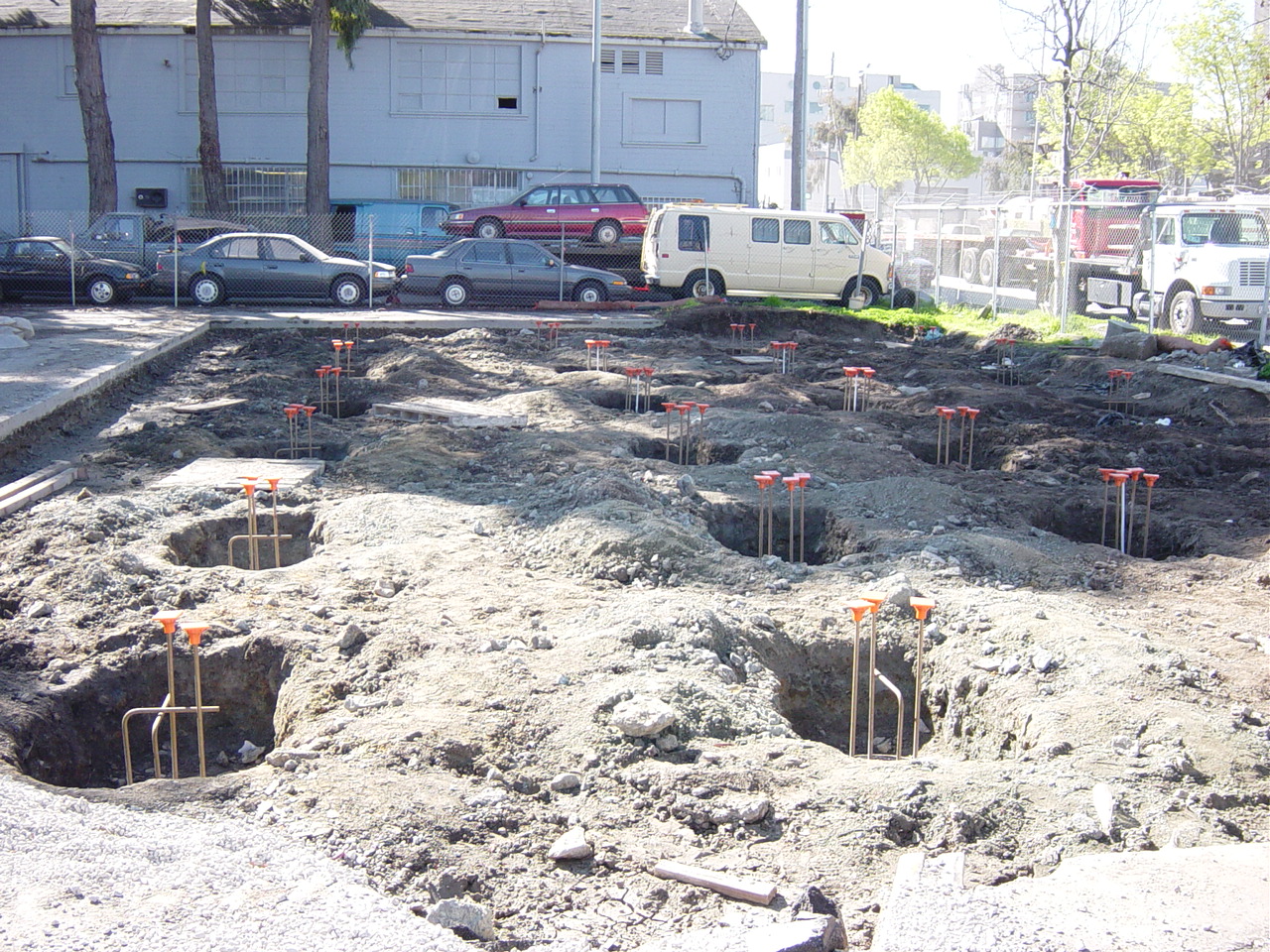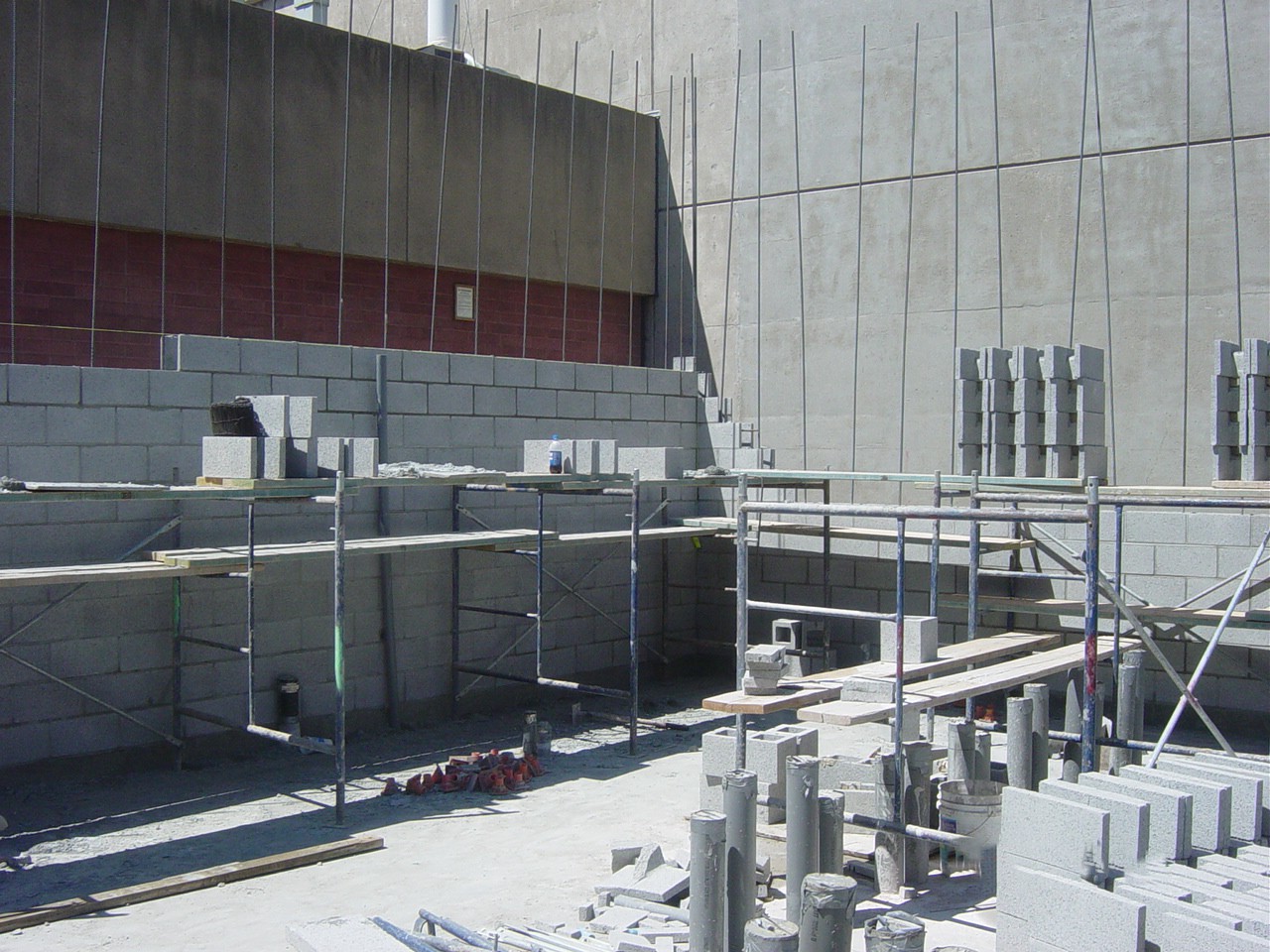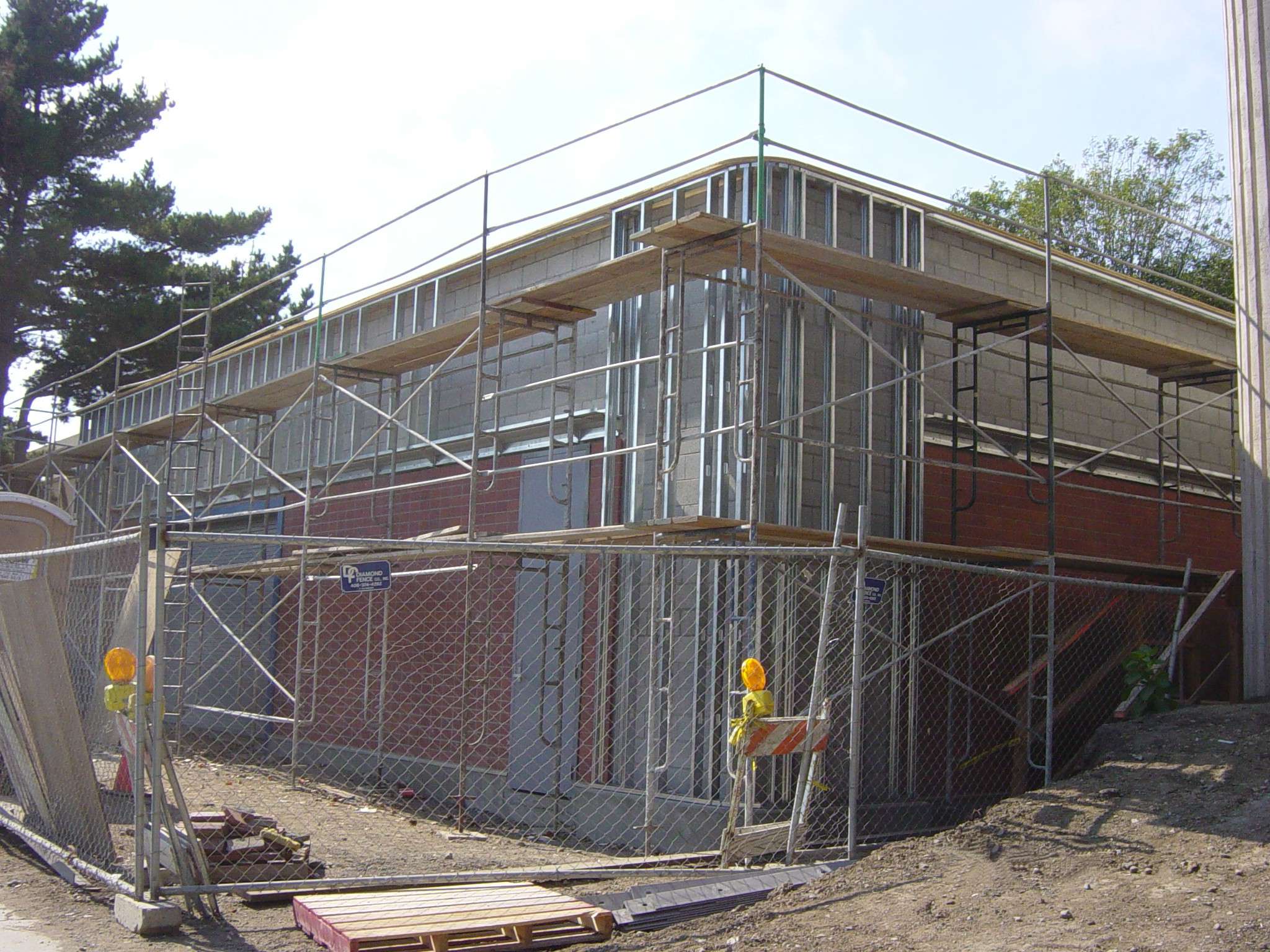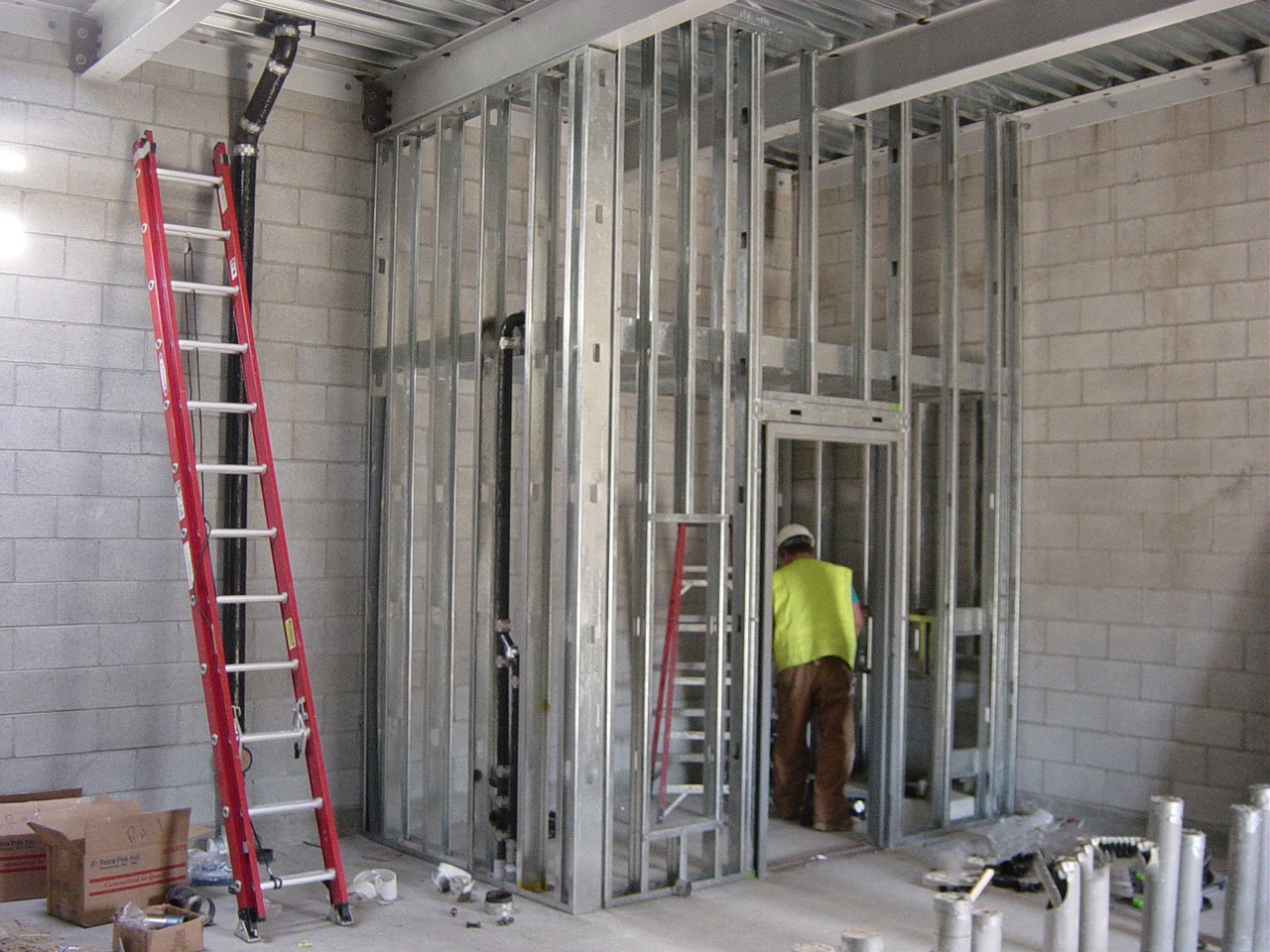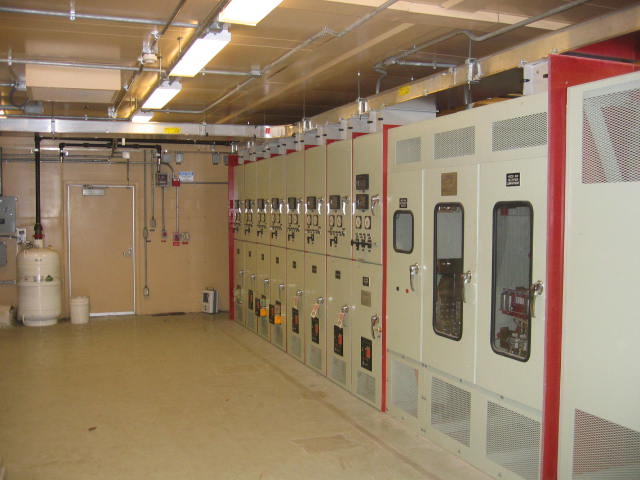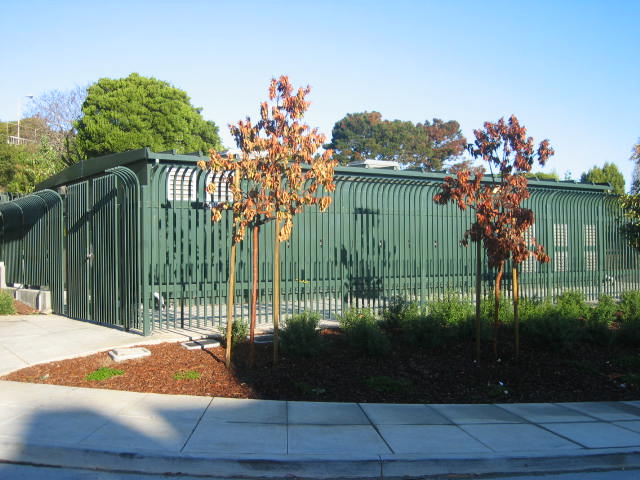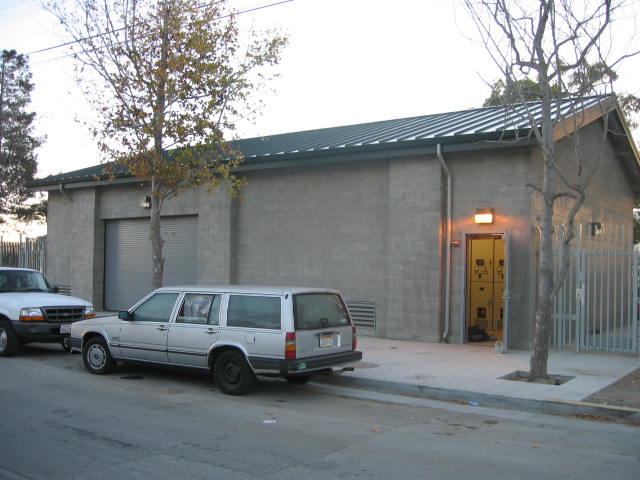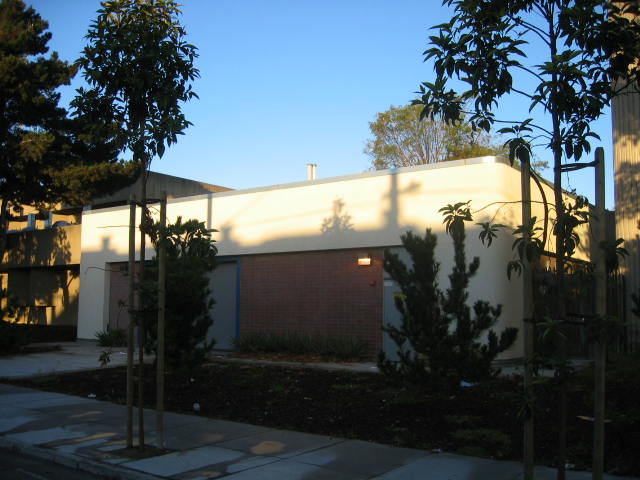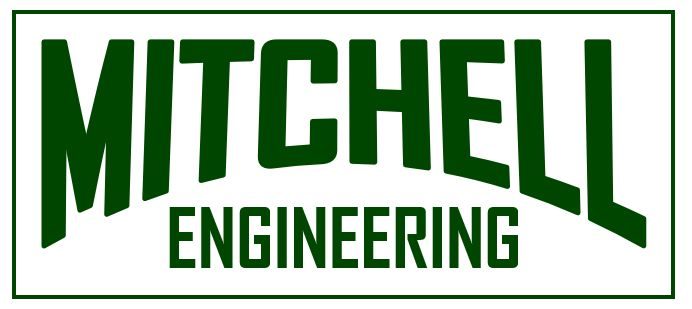3rd St. Light Rail Phase 1 – Segments A, B, C, D & H
San Francisco, California
The 3rd Street Light Rail Phase 1 Program covered a distance of 7.0 miles, divided into nine (9) separate segments or contracts along Third Street in San Francisco. The main objective of this ambitious project was to enhance overall transit services and give the commercial corridor a fresh, distinctive appearance. The city’s revitalization efforts included widening sidewalks with artist-designed paving patterns, planting distinct neighborhood trees, installing pedestrian lighting, and using unique colored rail trackway paving. Furthermore, 3rd Street was intended to function as a ‘Main Street’ for the communities along the corridor, as part of MUNI’s plan to transform it into one of the City’s ‘Great Streets’. Mitchell Engineering was responsible for constructing five of the nine segments.
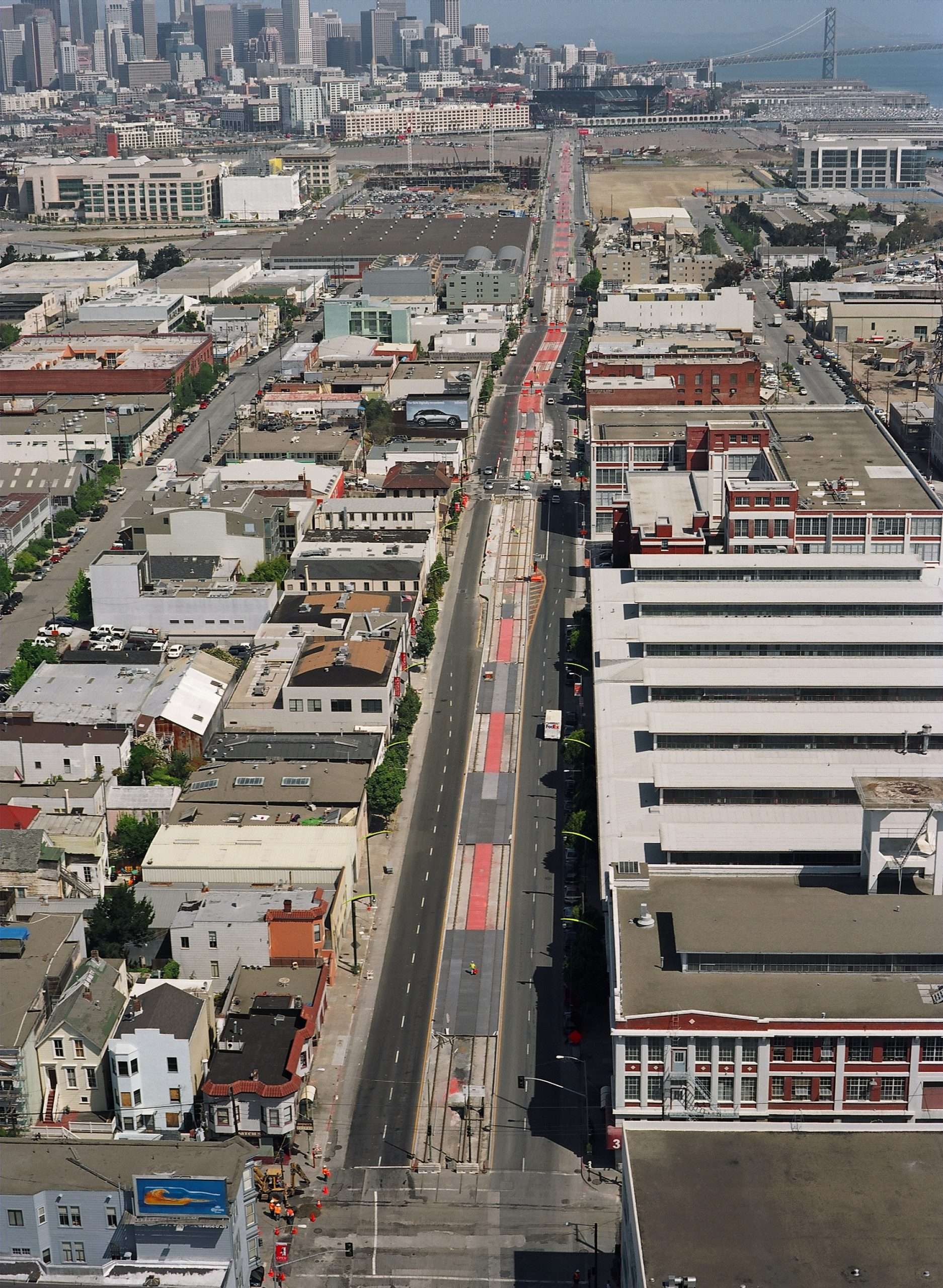
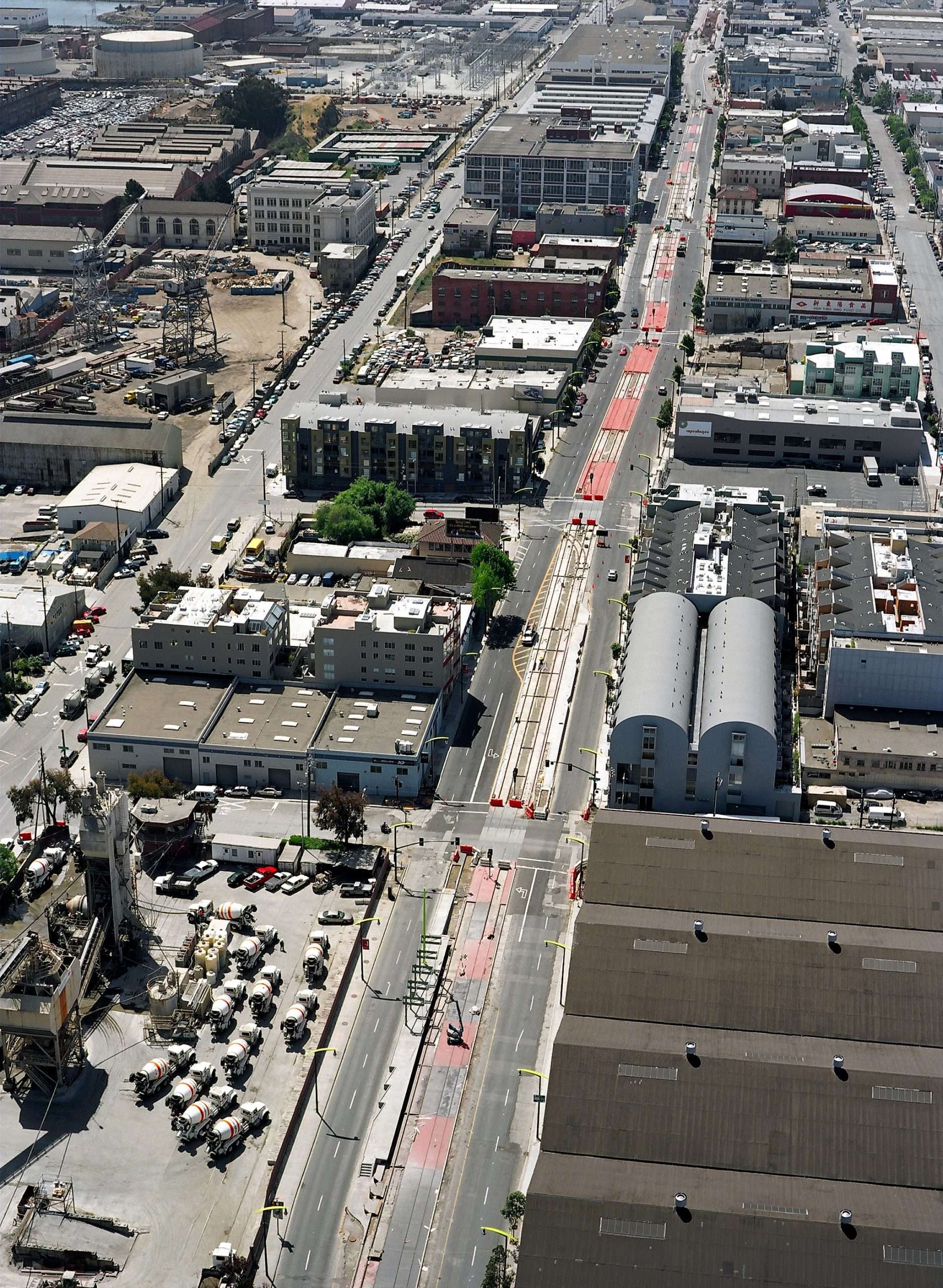
Segment “A” – Peter Maloney Bridge
The project involved the earthquake retrofitting and rehabilitation of the historic Peter R. Maloney Bridge, originally built in 1916 by Mr. Peter Strauss, who also designed and built the Golden Gate Bridge.
The work included removing, retrofitting, rehabilitating, and reinstalling the existing steel bascule span. This involved replacing corroded steel members, cleaning and repainting the entire span, constructing new light rail trackwork,
and installing a trolley arch overhead catenary system and traction electrification system.
To accomplish this, Mitchell needed to demolish the existing counterweight, construct cofferdams, remove the existing span, demolish the existing bridge foundations below and above water level, and excavate and dispose of 7,000 tons
of waste material within the cofferdams and other underwater areas.
Mitchell also replaced the reinforced concrete “T”-girder approach structures with reinforced concrete slab superstructures supported on 7,356 linear feet of 36” CISS steel piles. They constructed a reinforced concrete submerged
pit structure on the North side to house the new heavy weight concrete counterweight with seismic restraining devices. The bridge appearance was preserved by installing a GFRP simulated counterweight.
The rehabilitation work also included retrofitting the existing Operator House and Watchman House, reinstalling them on new foundations, and replacing mechanical and electrical operating machinery. Additionally, the existing wooden
fendering system was removed and replaced with a new reinforced plastic lumber fender system.
Owner: City and County of San Francisco, Department of Public Works
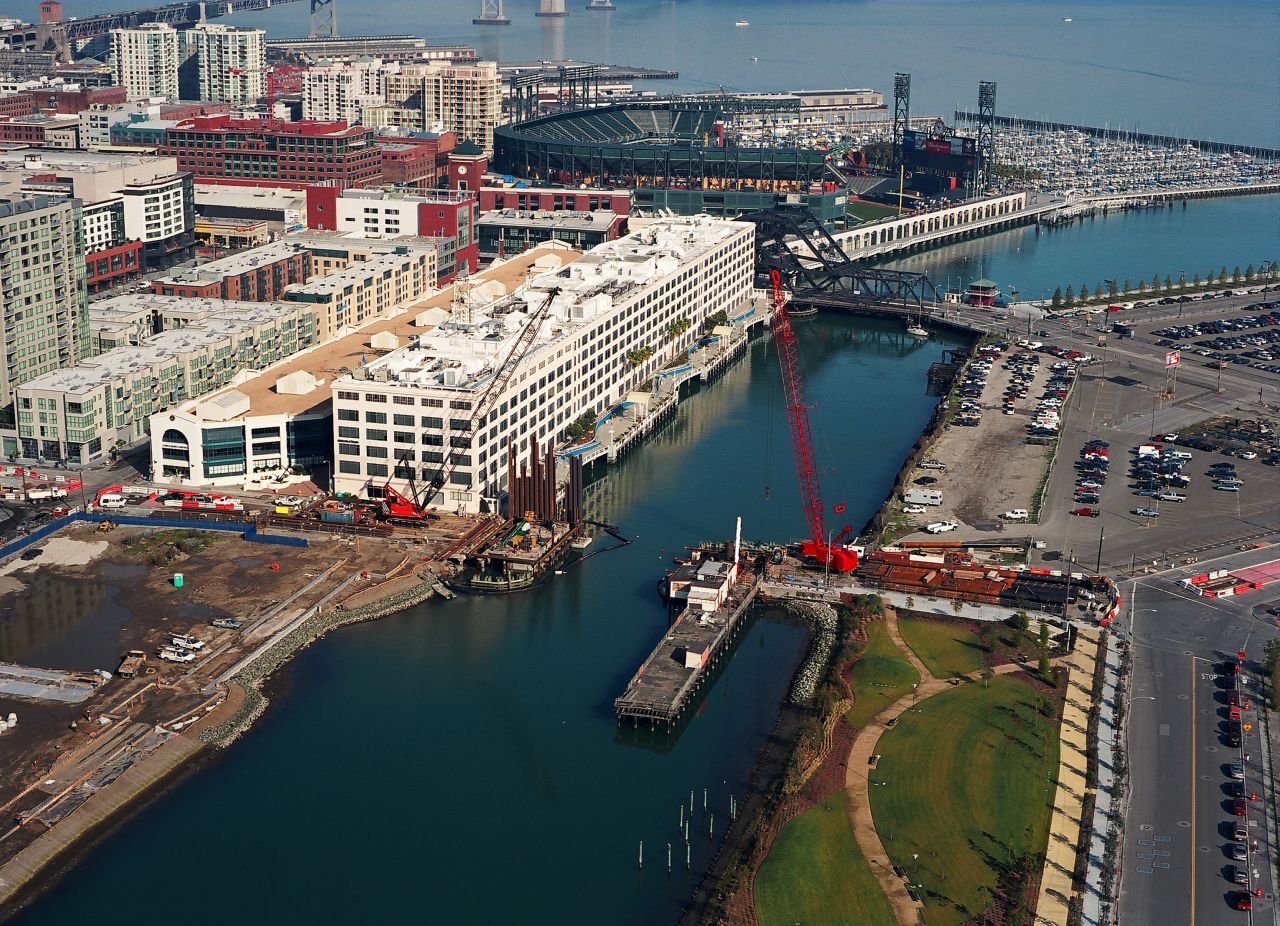
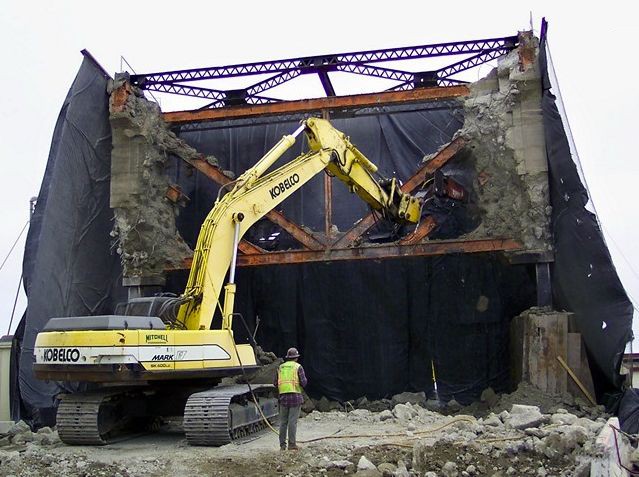
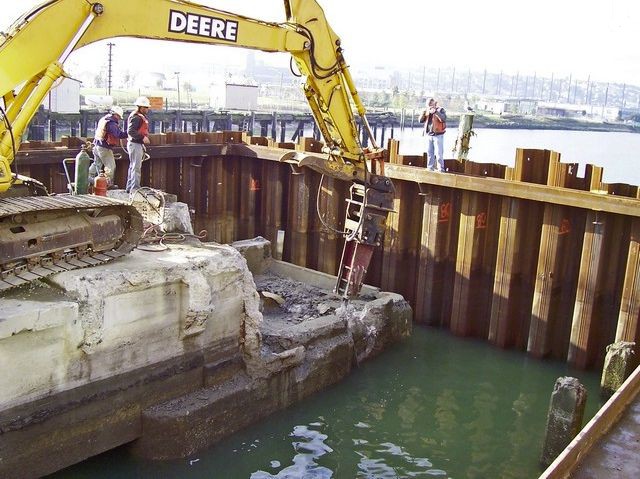
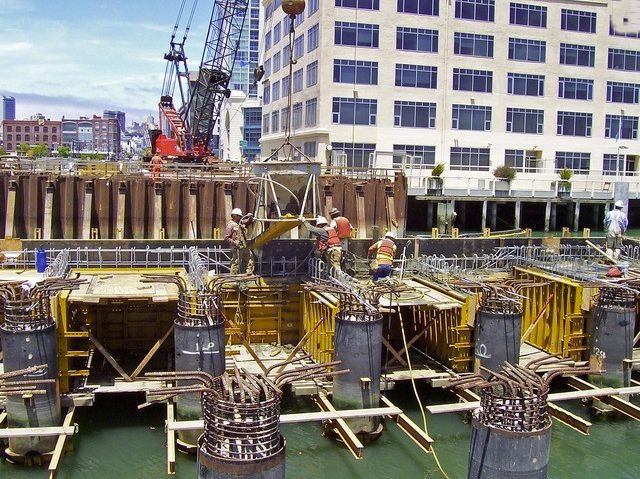
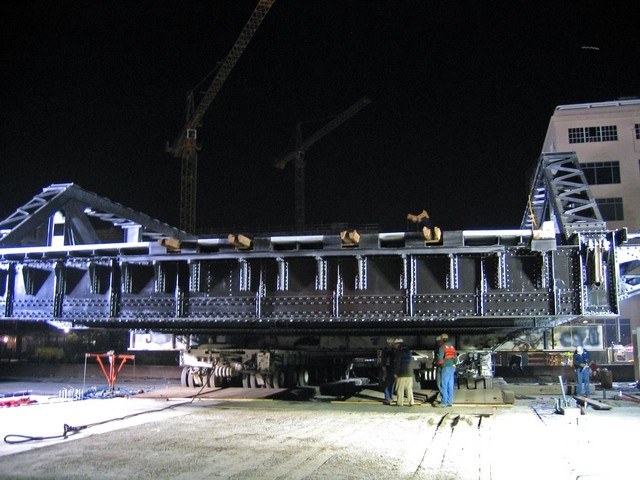
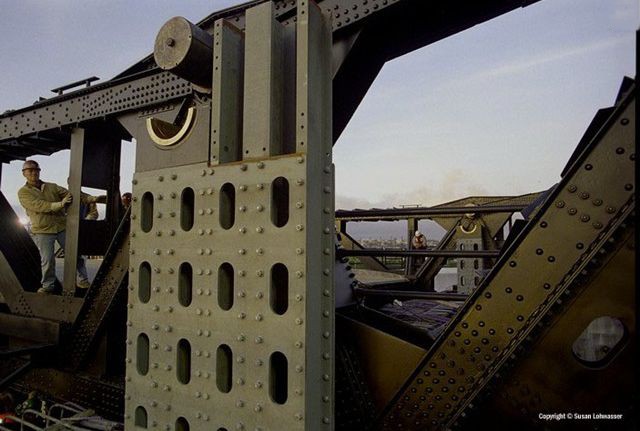
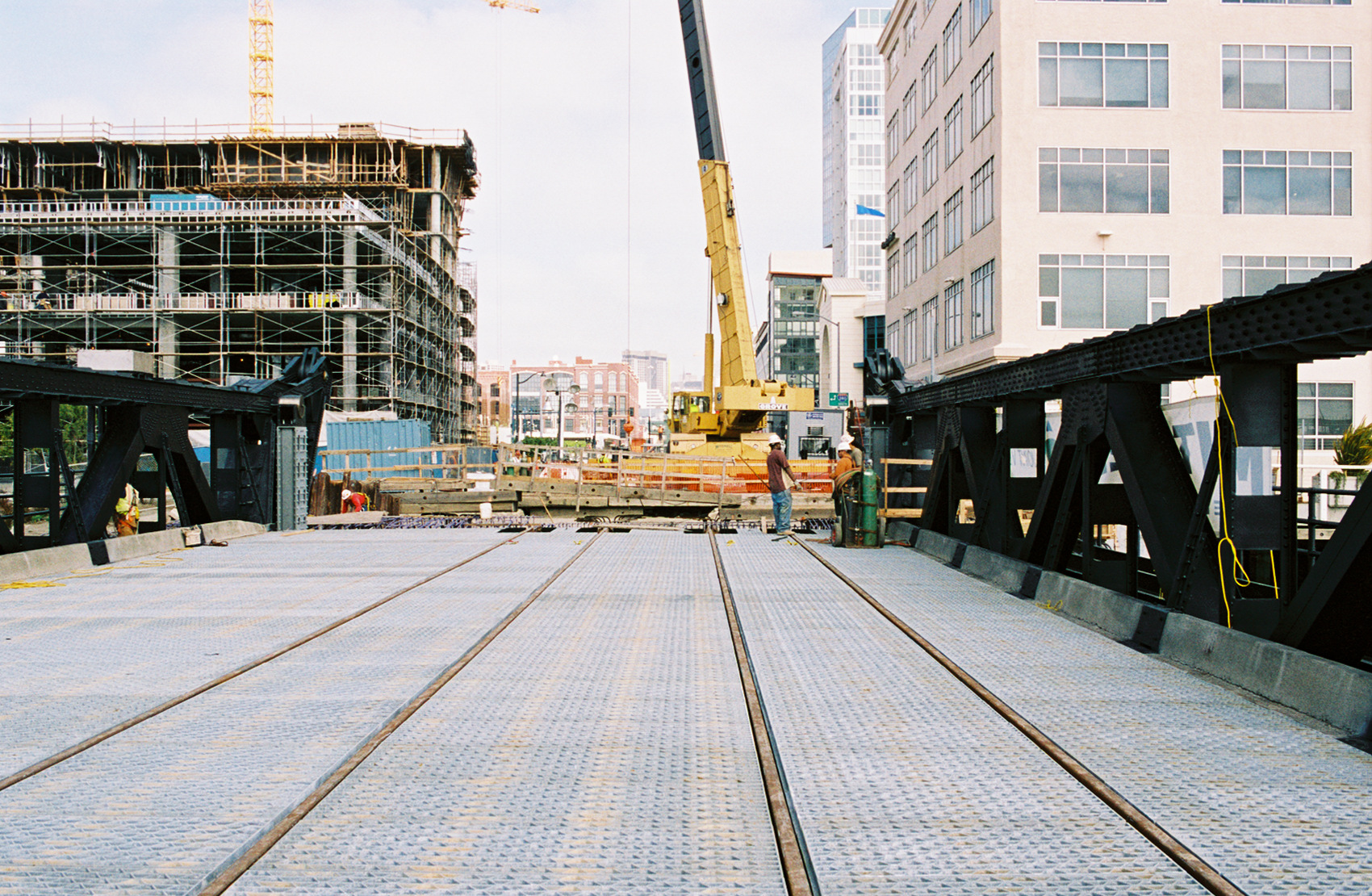
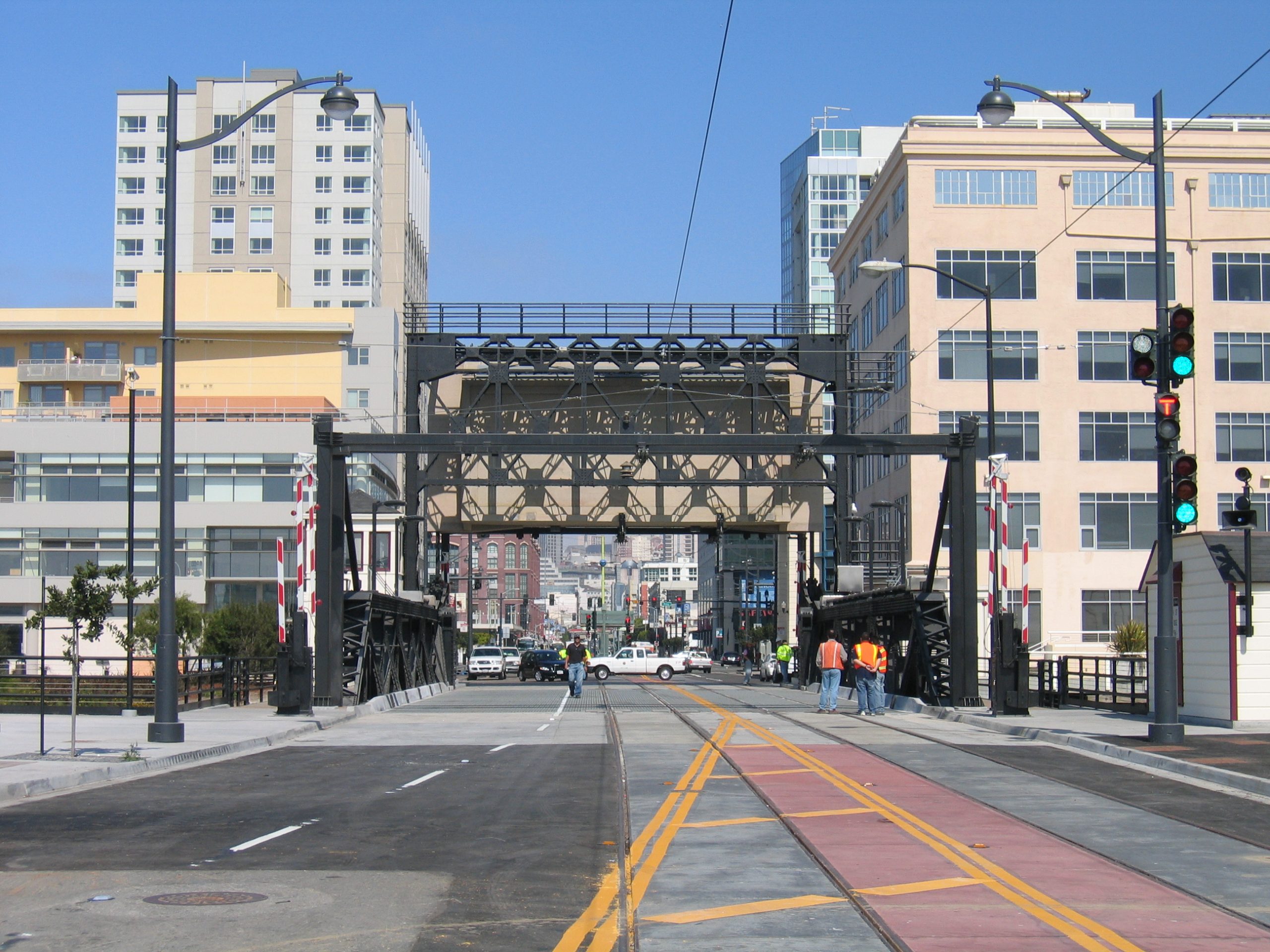
Segment “B” – 4th & King Streets to 3rd & 22nd Streets
Segment “B” consisted
of the construction of 1.8 miles of double-track mass transit light rail and special track in San Francisco, stretching from 4th Street & King Street to 3rd Street & 22nd Street. The segment includes boarding platforms, utility
relocations, and associated overhead electrical contact power systems.
The project involved relocating existing utilities, including 5,400 linear feet of sewer main (ranging from 6-inch to 48-inches in diameter), 4,700 linear feet of ductile iron water main (ranging from 6-inch to 16-inches), and an auxiliary
water supply system. The 1.8 miles of direct fixation Ri60 girder rail with associated special trackwork included the installation of 4 special trackwork turnouts and 1 special cross-over, along with nine boarding platforms
that were 270 feet in length. The project also involved the installation of 3,500 cubic yards of architectural track pavement, overhead catenary (approximately 18,000 feet of overhead contact wire with 108 system poles), traction
power systems, electrical duct bank work, flatwork and landscaping, traffic signalization, and roadway re-alignment and reconstruction. Excavation work included environmental mitigation of hazardous soils and asbestos abatement.
Owner: San Francisco Municipal Railways
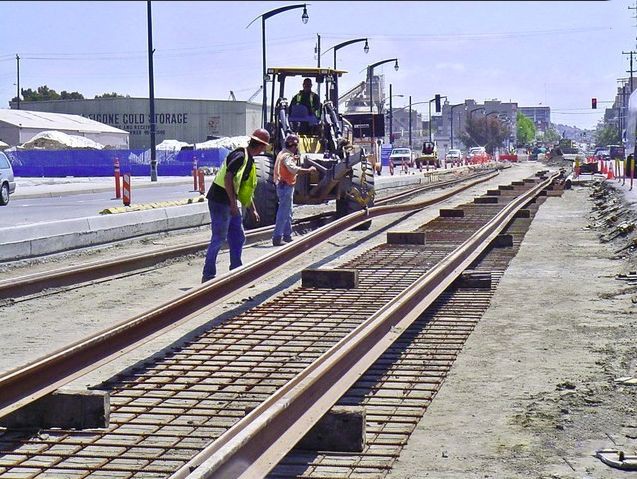
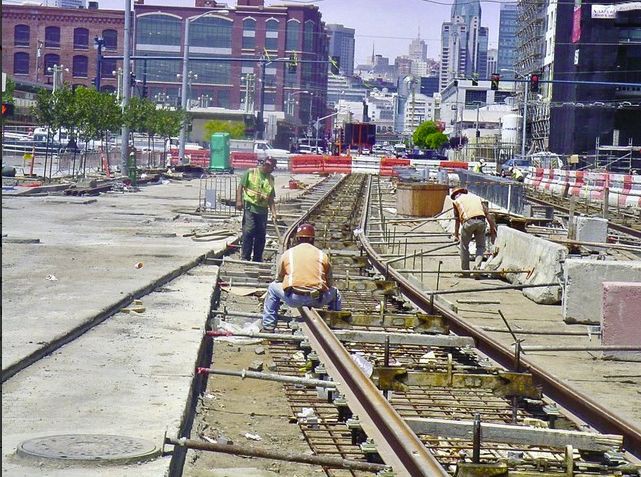
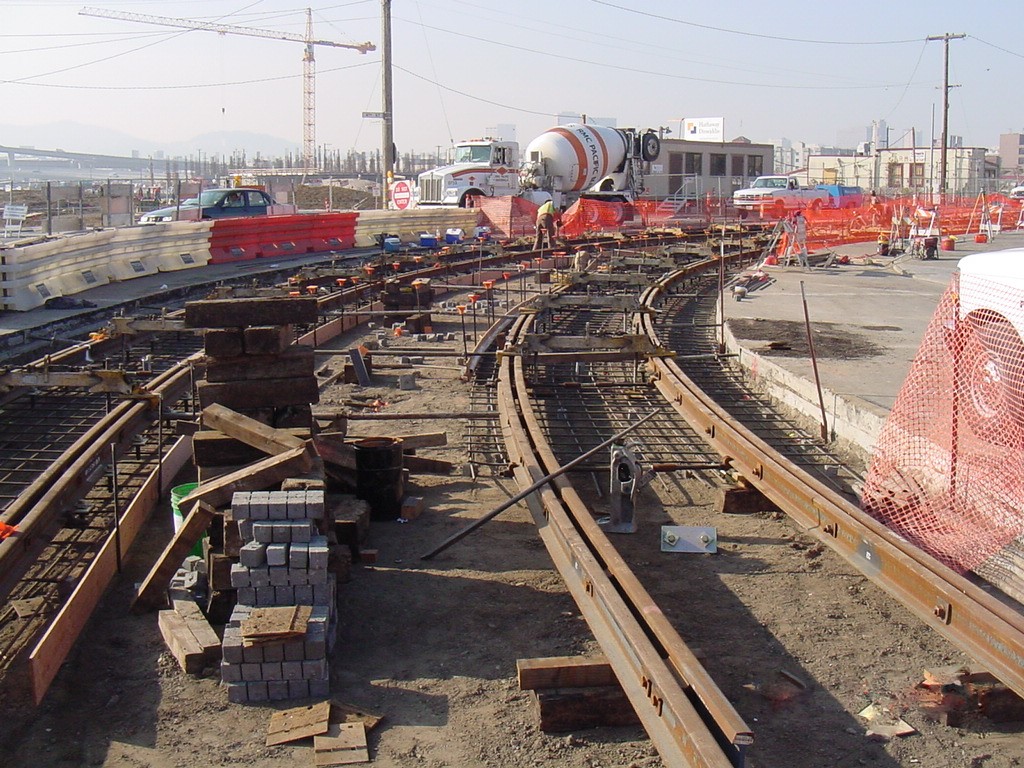
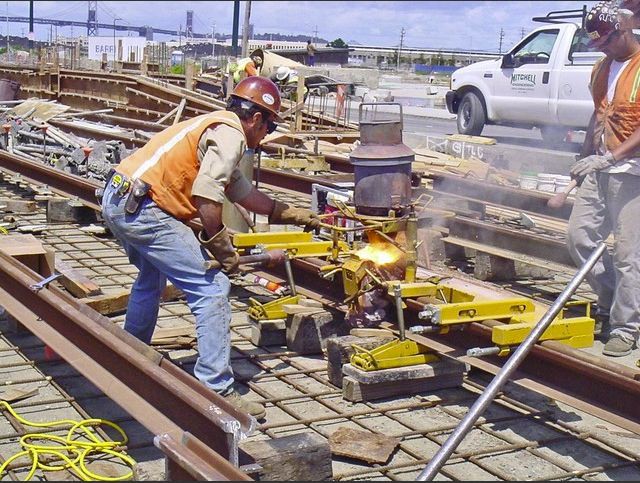
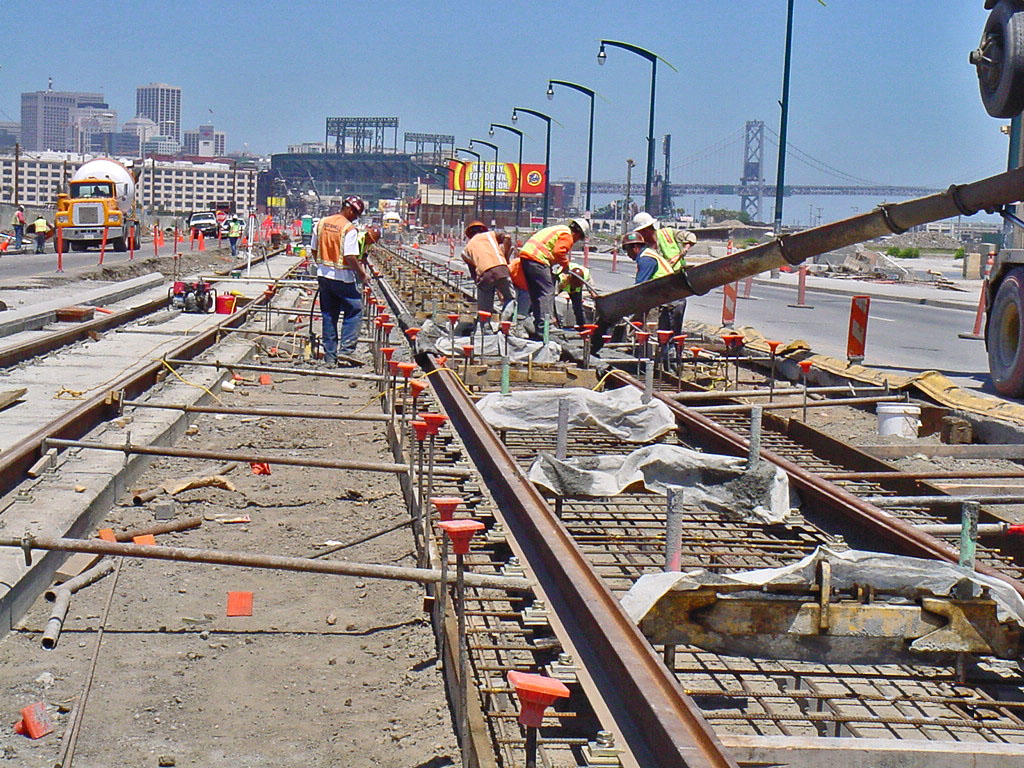
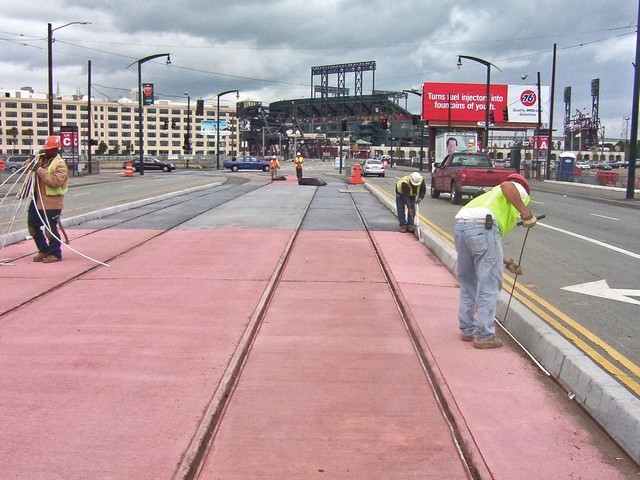
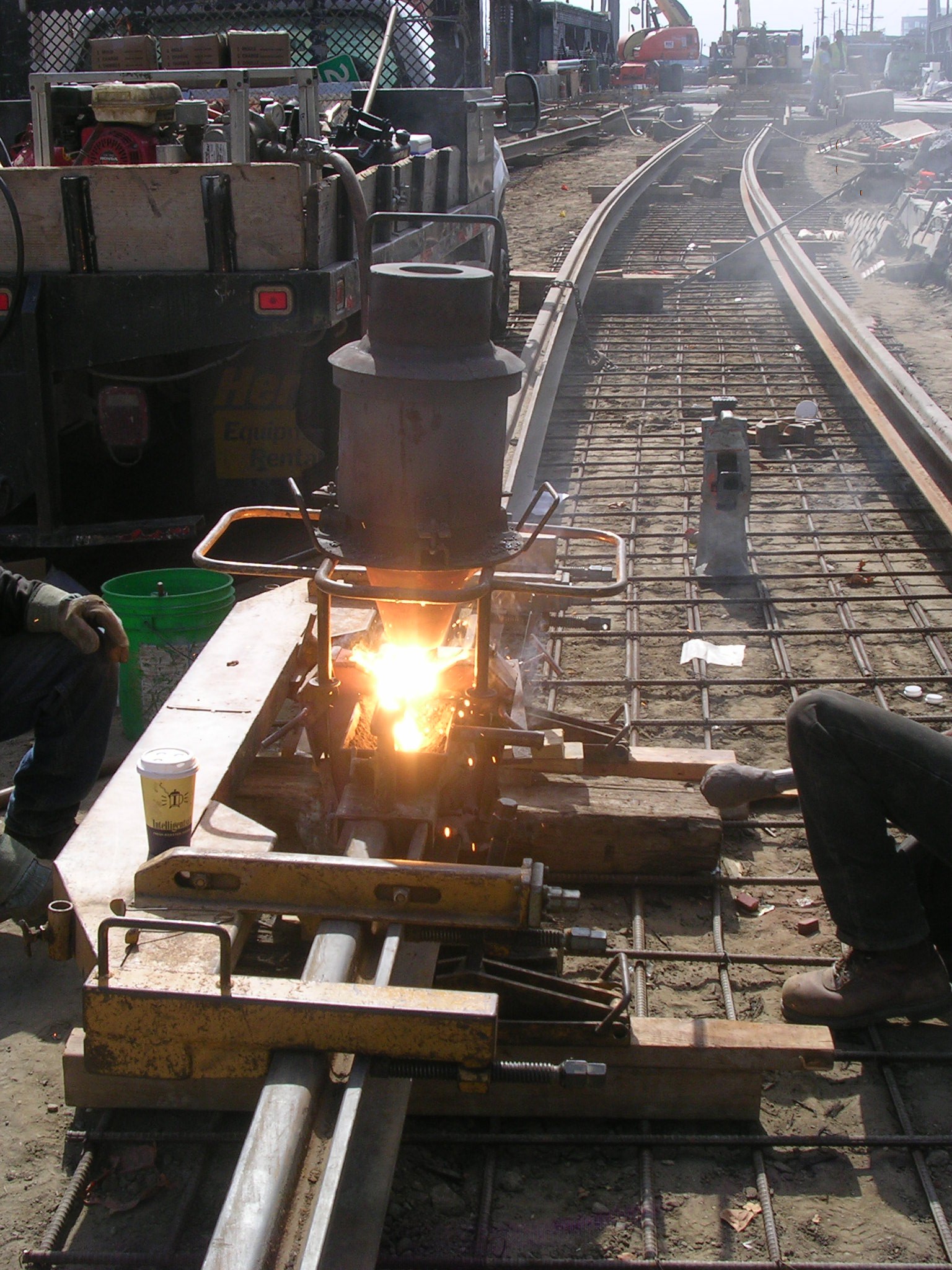
Segment “C” – 3rd & 22nd Streets to Jerrold Avenue
The project involved the construction of 1.4 miles of direct fixation double-track mass transit light rail, including seven boarding platforms, overhead electrical contact power systems, special track, and utility relocations. Additionally,
it involved the complete structural retrofit of an existing double-leaf bascule bridge in San Francisco along 3rd Street between 22nd Street and Jerrold Avenue.
Apart from the track work, the project included the removal, handling, and disposal of approximately 19,000 metric tons of hazardous materials. It also involved the installation of special trackwork features such as crossovers, diamond crossings, and half grand unions. Retrofitting of an existing bascule double-leaf drawbridge (The Islais Creek Bridge) was carried out, which involved the driving of 30-inch CIDH piling, counterweight upgrades, and the addition of overhead electrical contact and other electrical systems.
The project also comprised the construction of 7,650 linear feet of underground duct bank systems, along with the relocation and improvement of 8,320 linear feet of existing SF Sewer Systems, including large sewer offset manholes supported by 14-inch driven concrete piles and complex connections to existing systems under various degrees of pressure. Additionally, there were full upgrades of 7,796 linear feet of San Francisco Water Department potable water lines, along with 2,600 linear feet of Fire Department Auxiliary Water Supply System lines.
Mitchell also undertook the construction of the Rail Signalization System, made final improvements to streets, sidewalks, and landscaping, and also relocated and improved existing SF Traffic Signal Systems. Mitchell was also responsible
for managing vehicle, marine, and rail traffic during construction.
Owner: San Francisco Municipal Railways
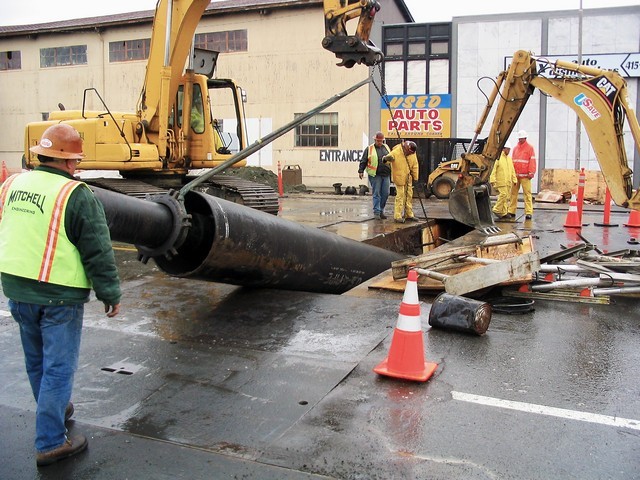
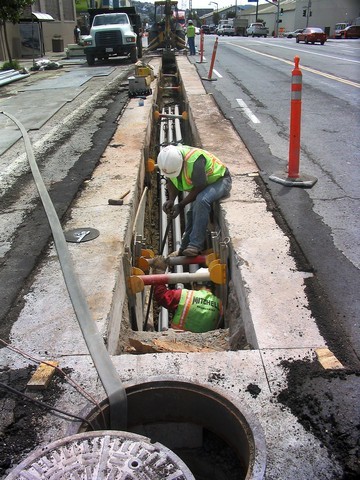
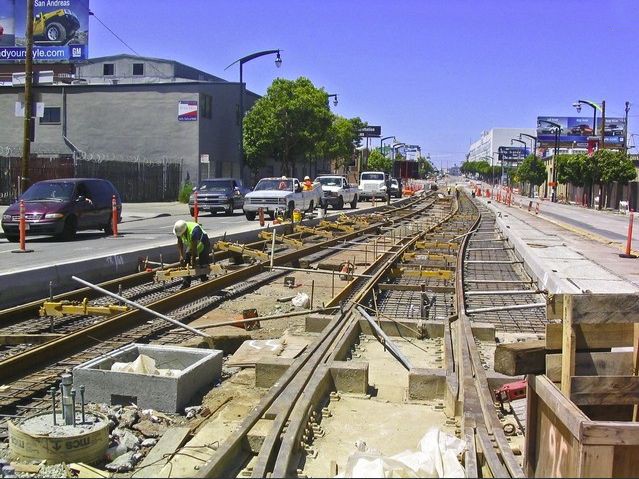
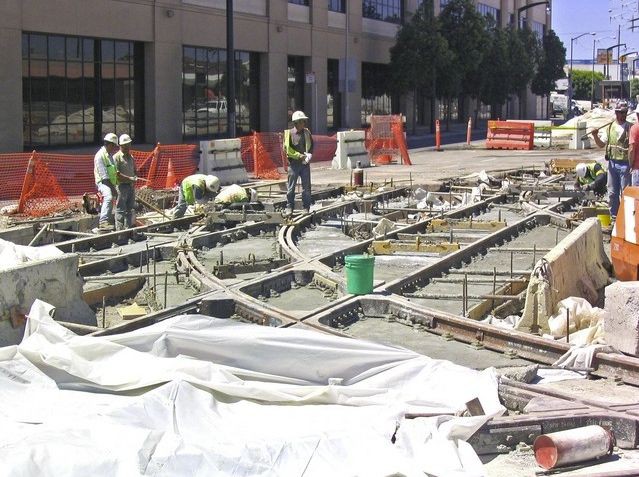
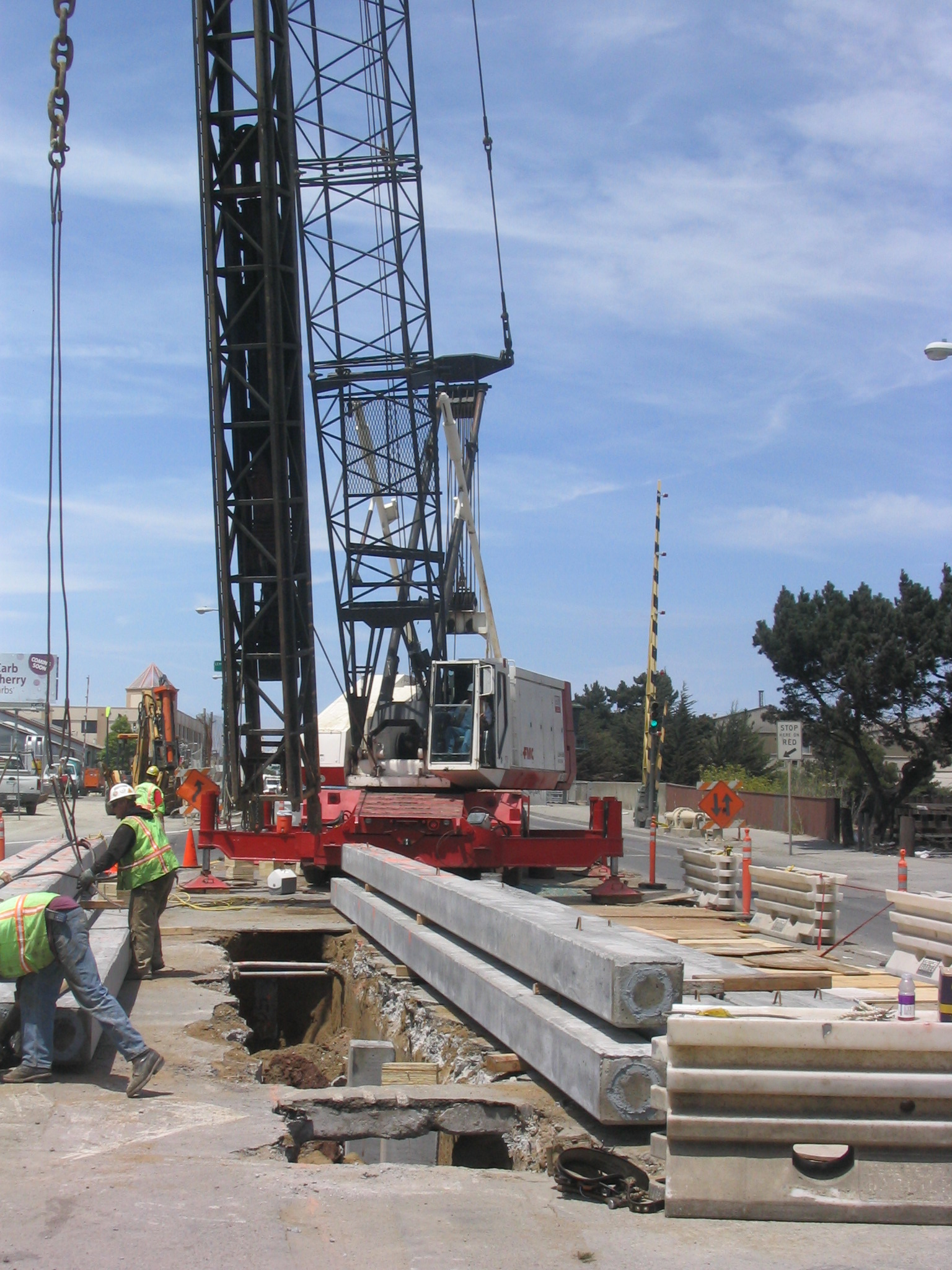
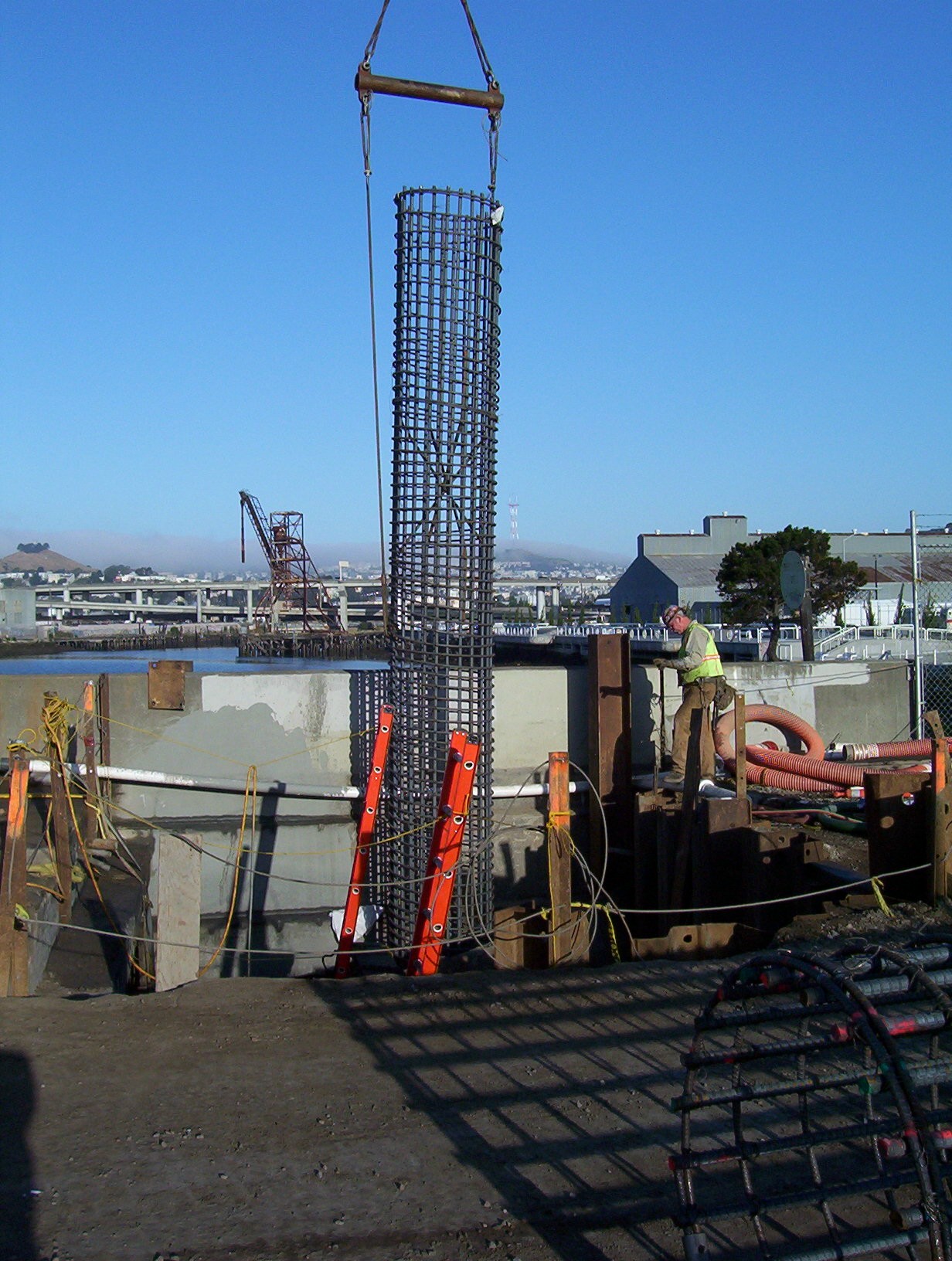
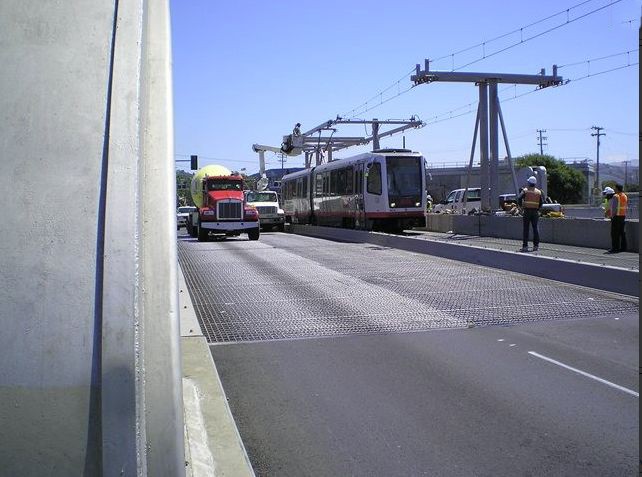
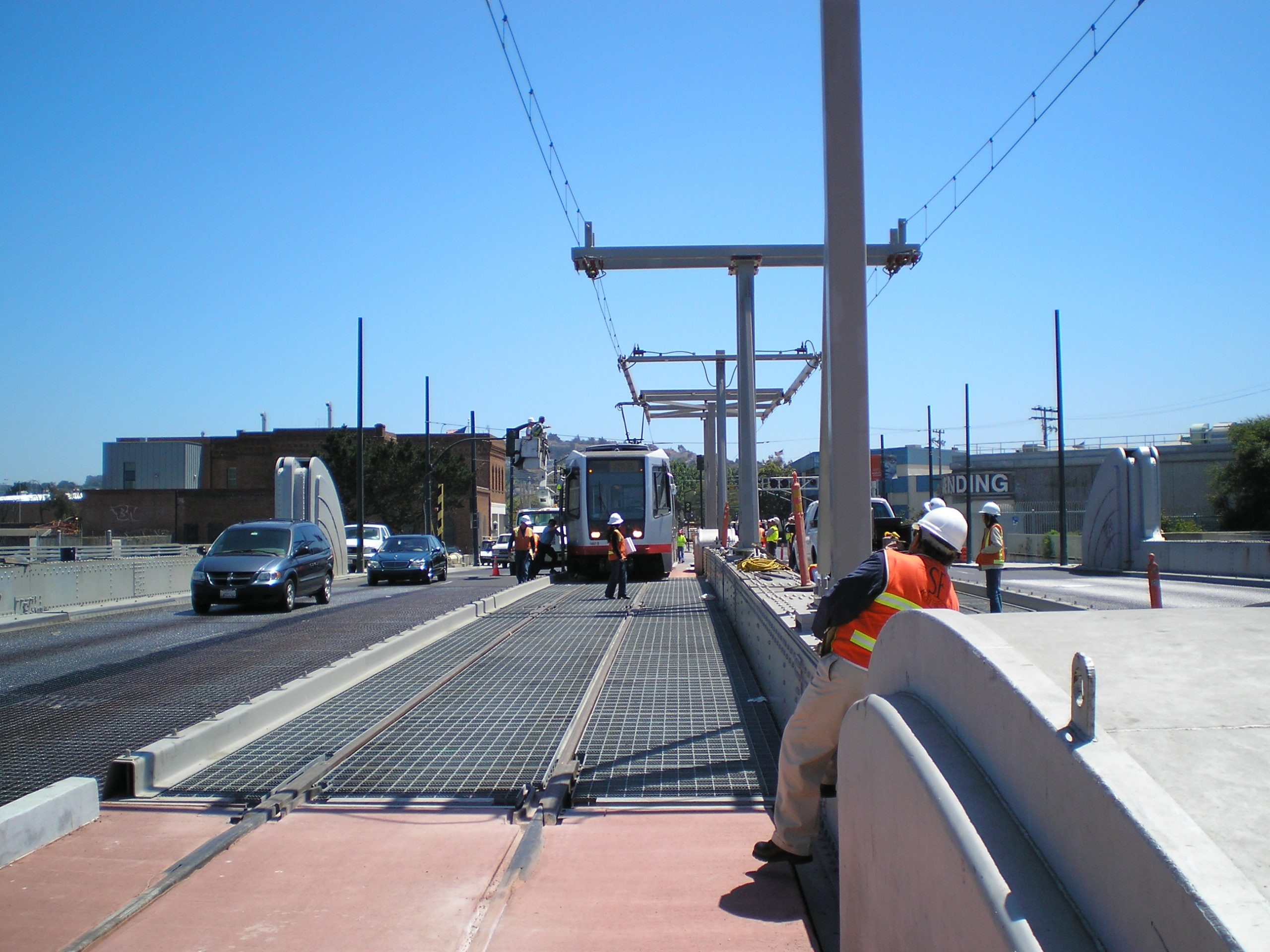
Segment “D” – 3rd & Jerrold Streets to Donner Avenue
The Segment “D” Project consisted of the installation f 1.0 miles of double-track mass transit light rail and special track, as well as overhead electrical contact power systems in San Francisco along 3rd Street between Jerrold Avenue
and Donner Avenue in the Bayview commercial district.
The construction of the new light rail included 11,256 linear feet of new Girder Rail and 1,280 linear feet of 115# Rail. Additionally, underground utilities for electrical, sewer, water, and high-pressure water systems were constructed. Some of the utilities built were 8,330 linear feet of new sewer line (ranging from 10” to 27” in diameter) and 11,778 linear feet of new water line (ranging from 4” to 16” in diameter). Furthermore, 6,676 cubic yards of architectural concrete was used for the track work.
In addition to the new transit platforms, sub-sidewalk basement modifications were done, and there was also work on the roadway pavement, 90,632 square feet of new sidewalk reconstruction, 219 trees (including palm trees) and other
landscaping, street lighting, traffic signals, and 13,123 linear feet of Trolley Wire for the new overhead catenary system.
Owner: San Francisco Municipal Railways
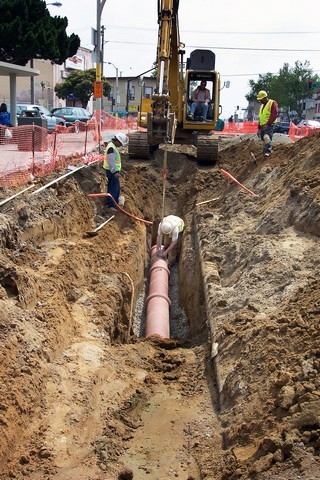
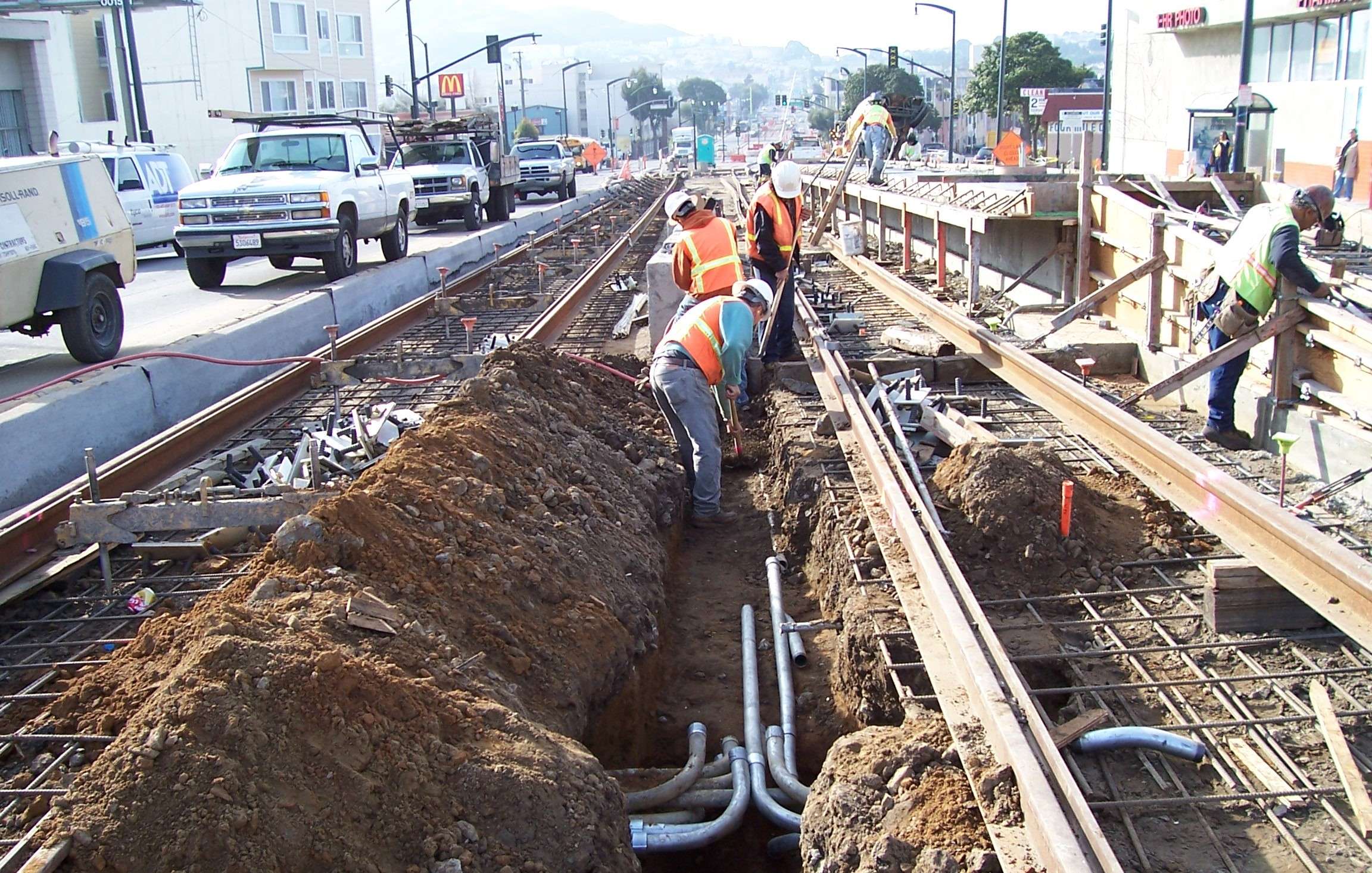
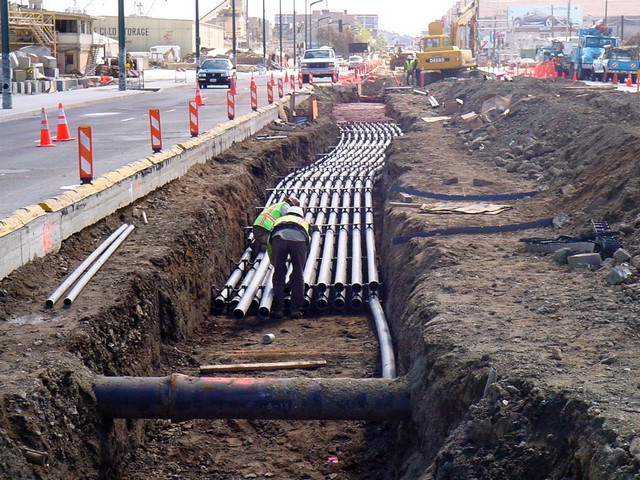
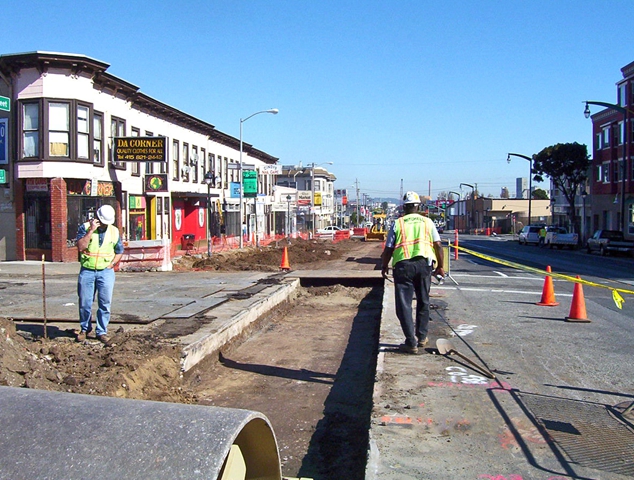

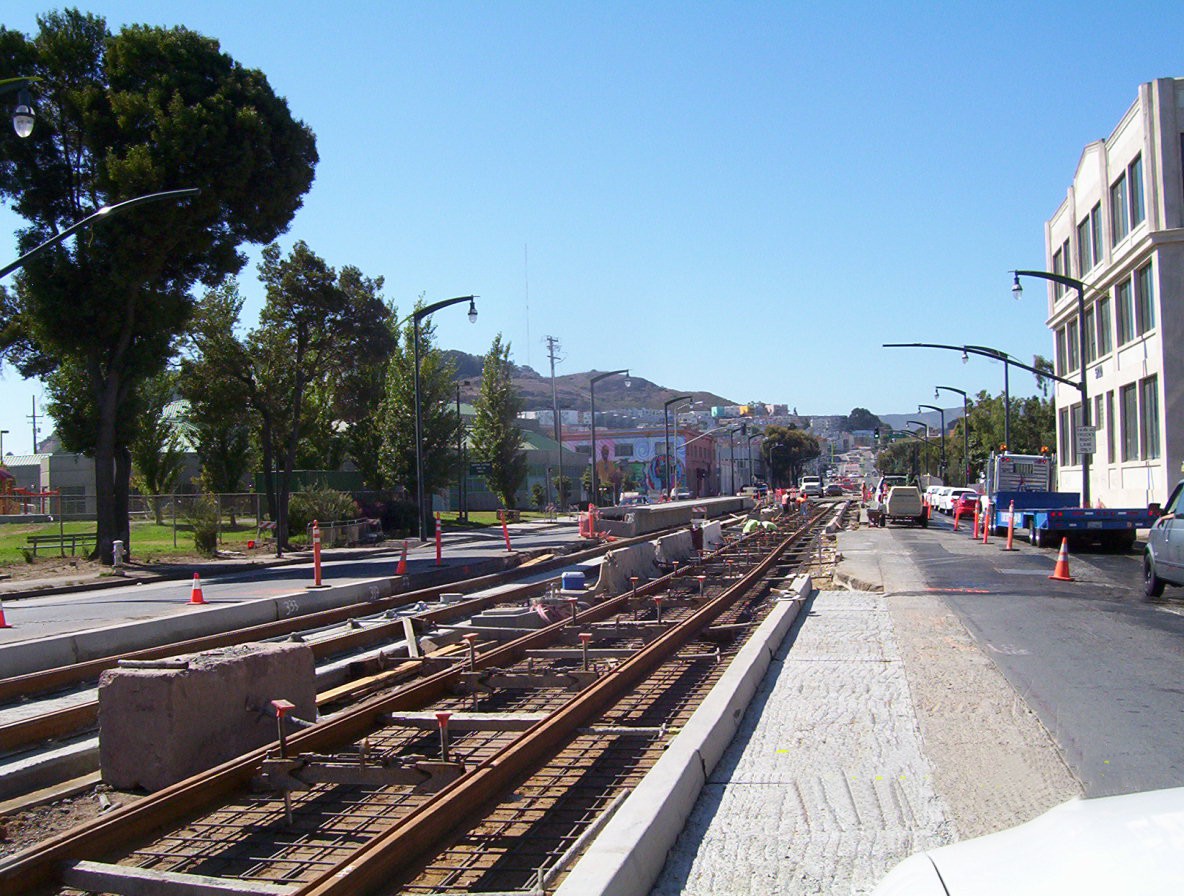
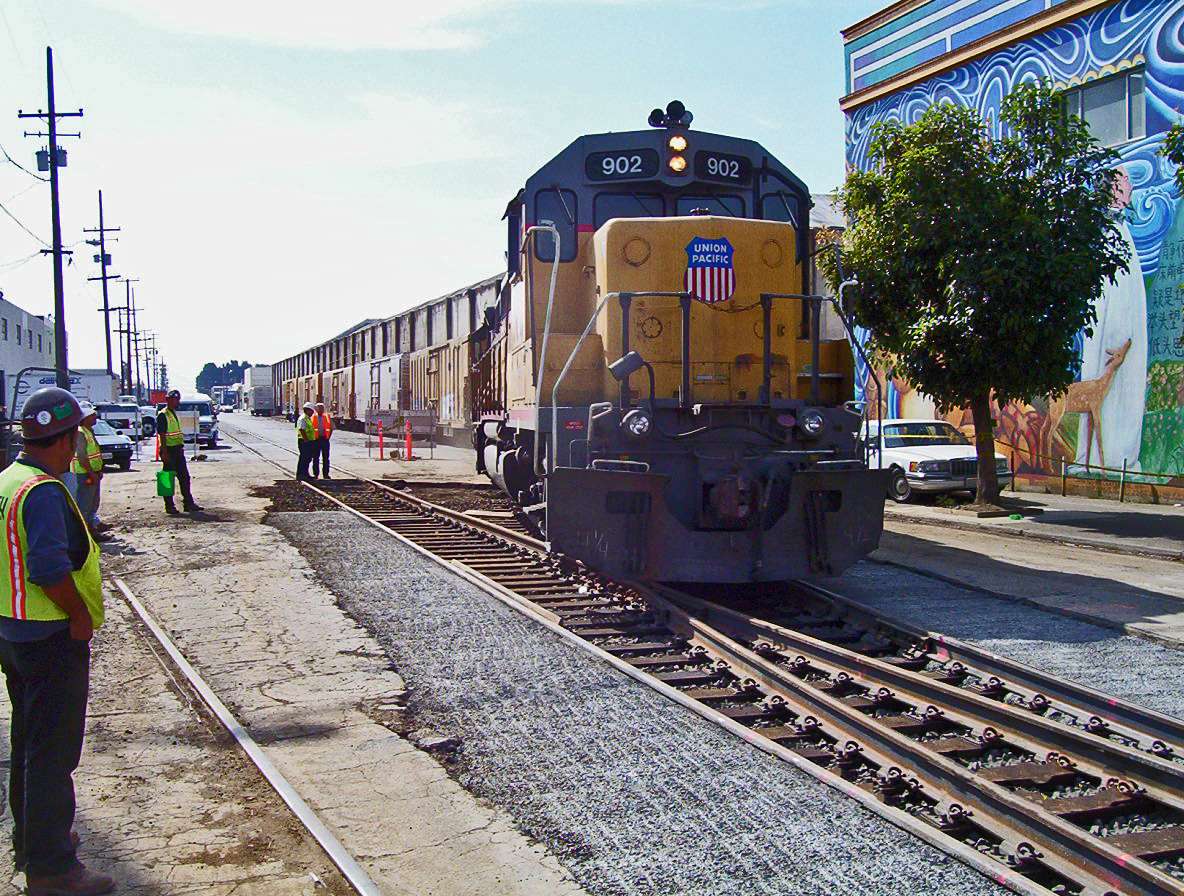
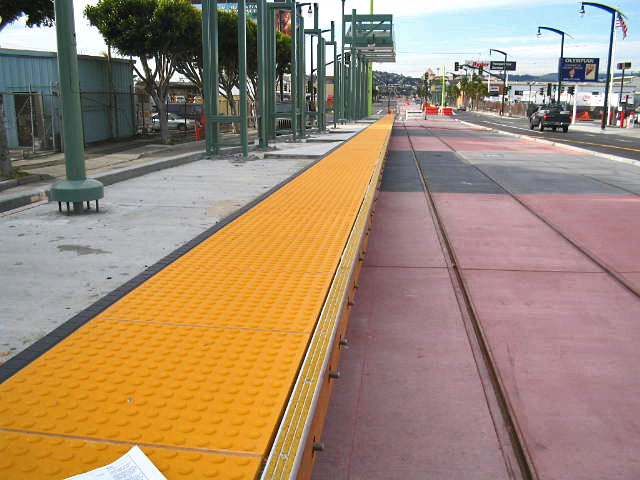
Segment “H” – Traction Power Systems
Mitchell constructed two concrete masonry block substation buildings with steel trusses and corrugated metal decking. These buildings will accommodate the Traction Power Equipment, including DC switch gear, AC switch gear, transformer
and rectifier, fire suppression system, air distribution equipment, power SCADA equipment, new MIMIC panel board, and CCTV system. The buildings will have brick veneer, plaster, roll-up doors, and preformed metal roofing. Mitchell
used Tubex piles due to low overhead at one of the substations. A total of 24 piles, each 16” in diameter and 40 feet long, were driven.
Additionally, Mitchell provided one prefabricated building to house the electrical and mechanical items mentioned above. This building was delivered fully equipped in two halves.
Each site will include picket metal fences, sidewalks, and new landscaping. As part of the contract, Mitchell also constructed duct banks from each building to Third Street to provide power to the Third Street Light Rail Project.
The three electrical substations are located at Illinois Street, Phelps Street, and Keith Street.
Owner: San Francisco Municipal Railways
